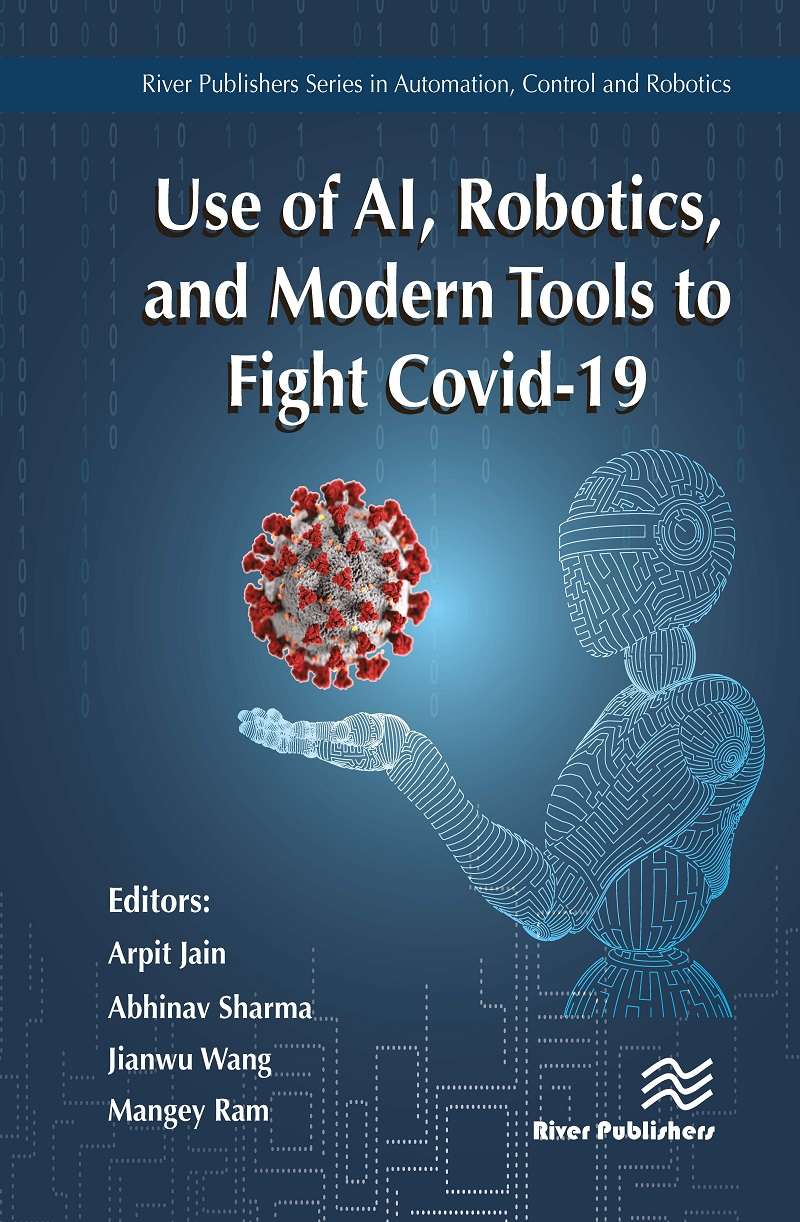Automation, Control and Robotics
Use of AI, Robotics, and Modern Tools to Fight Covid-19
Editors:
Arpit Jain, University of Petroleum and Energy Studies, India
Abhinav Sharma, University of Petroleum and Energy Studies, India
Jianwu Wang, University of Maryland, Baltimore County, USA
Mangey Ram, Graphic Era Deemed to be University, India
ISBN: 9788770224437 e-ISBN: 9788770224420
Available: May 2021
The COVID-19 pandemic has hit the global at a colossal scale. With worldwide reported cases of 5.34 million it has led to severe impact on humanity. Being a highly contagious disease, it has given global health services their most severe challenge. Various countries are fighting to minimize the losses due to the outbreak, however a common trait is enforcing lockdown, which has become the main defence mechanism. Researchers are working around the clock to find a breakthrough in the diagnostics and treatment of the pandemic.
AI technology is useful for fast drug development and treatment. In the starting phase of COVID-19 pandemic, the medical fraternity in China diagnosed the virus using computed tomography (CT) and X-ray images due to the limitation of testing kits. Deep learning neural network model have also been used for COVID-19 diagnosis. AI assisted intelligent humanoid robots can be used to reduce the human contact and spread of COVID-19. In Italy robots have been used for measuring blood pressure, oxygen saturation and temperature of patients. Robots have also found applications in disinfecting and sterilizing of public places, COVID-19 testing, food and medicine delivery as well as entertaining patients in hospitals and quarantine centers, thereby reducing the workload of doctors and nurses.
Prediction of the spread of virus and providing the guidelines or prevention measures is another AI application in COVID-19. Kaggle and GitHub are the two websites where the real-time data of COVID-19 is aggregated. This includes confirmed cases, active cases, cured cases and deaths in each country. This data set can be used for predicting the active cases across different regions of the world so that appropriate amount of health infrastructure can be made available to these places.
AI technology is useful for fast drug development and treatment. In the starting phase of COVID-19 pandemic, the medical fraternity in China diagnosed the virus using computed tomography (CT) and X-ray images due to the limitation of testing kits. Deep learning neural network model have also been used for COVID-19 diagnosis. AI assisted intelligent humanoid robots can be used to reduce the human contact and spread of COVID-19. In Italy robots have been used for measuring blood pressure, oxygen saturation and temperature of patients. Robots have also found applications in disinfecting and sterilizing of public places, COVID-19 testing, food and medicine delivery as well as entertaining patients in hospitals and quarantine centers, thereby reducing the workload of doctors and nurses.
Prediction of the spread of virus and providing the guidelines or prevention measures is another AI application in COVID-19. Kaggle and GitHub are the two websites where the real-time data of COVID-19 is aggregated. This includes confirmed cases, active cases, cured cases and deaths in each country. This data set can be used for predicting the active cases across different regions of the world so that appropriate amount of health infrastructure can be made available to these places.
COVID-19; Machine Learning; Pandemics; Robotics; Climate change; Nurse scheduling, Time-series distribution; Optimization; Technical barriers to trade
